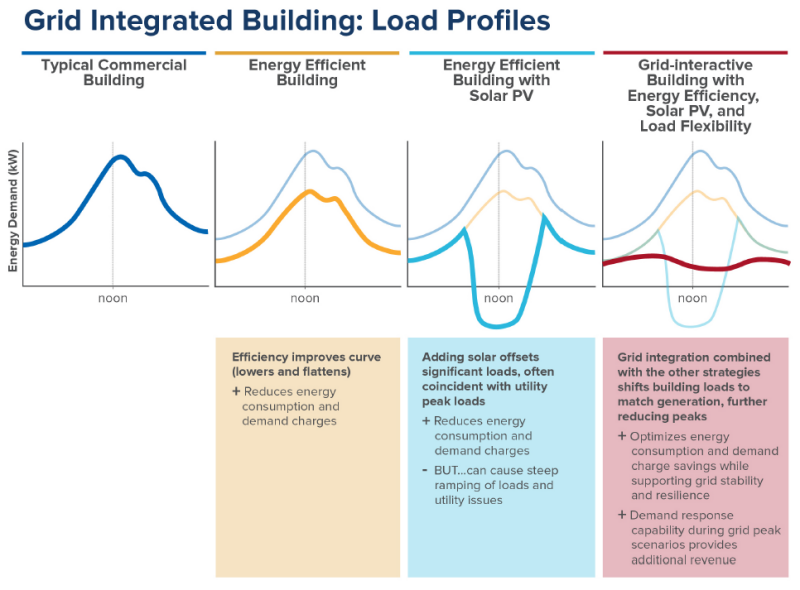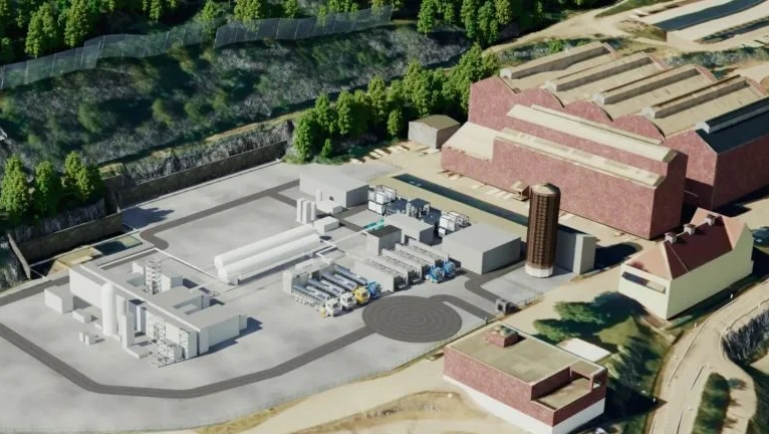What if buildings could communicate with the electric grid to save money and reduce their environmental impacts? Buildings drive up to 80 percent of the peak demand on the grid, and peak demand drives grid investments in generation, transmission, and distribution assets, so there is a huge opportunity to balance building demand with electricity system supply.
Grid-interactive energy efficient buildings (GEBs) leverage technologies and strategies to address this issue through demand management and load flexibility. GEBs include an optimised blend of energy efficiency, energy storage, distributed energy generation, and load-flexible technologies that can match the needs of our evolving electricity system over time. The result is a more flexible building energy load profile with lower peaks that reduces building operating costs through demand-charge savings.
 SOURCE: Value Potential For Gridinteractive Efficient Buildings In The Gsa Portfolio: A Cost-Benefit Analysis / RMI, US General Services Administration (GSA)
SOURCE: Value Potential For Gridinteractive Efficient Buildings In The Gsa Portfolio: A Cost-Benefit Analysis / RMI, US General Services Administration (GSA)
Win-win solution for building owners, utilities, society
GEBs use energy efficiency, storage, load flexibility, and renewable energy strategies to reduce costs to buildings and the utility
GEBs can provide a win-win solution for the building owner, utility, and society as a whole.
Building owners can benefit as a result of energy and demand charge reduction. This will reduce a large commercial user’s electricity bills and operating costs while improving the building’s performance. Some building owners may also be able to sell electricity back to the grid, benefit from utility demand response programs, or leverage price arbitrage on wholesale energy markets.
Utilities can benefit, as GEBs can help shift energy demand to times when cleaner and/or more affordable power are abundant. GEBs can also reduce the severity of major peaks or dips in demand that can be hard for utilities to accommodate. These qualities are especially important as more renewable energy and energy storage is added to buildings and the grid. Balancing load more effectively can help decrease costs for utilities, by avoiding investments in additional transmission, distribution, and generation assets.
Society benefits, as GEBs help increase resilience, reduce the amount of fossil fuel generation needed, and save on energy bills. GEBs help the grid run more smoothly, and any cost savings that utilities see are ultimately passed on to customers who may enjoy lower electric bills as a result.







